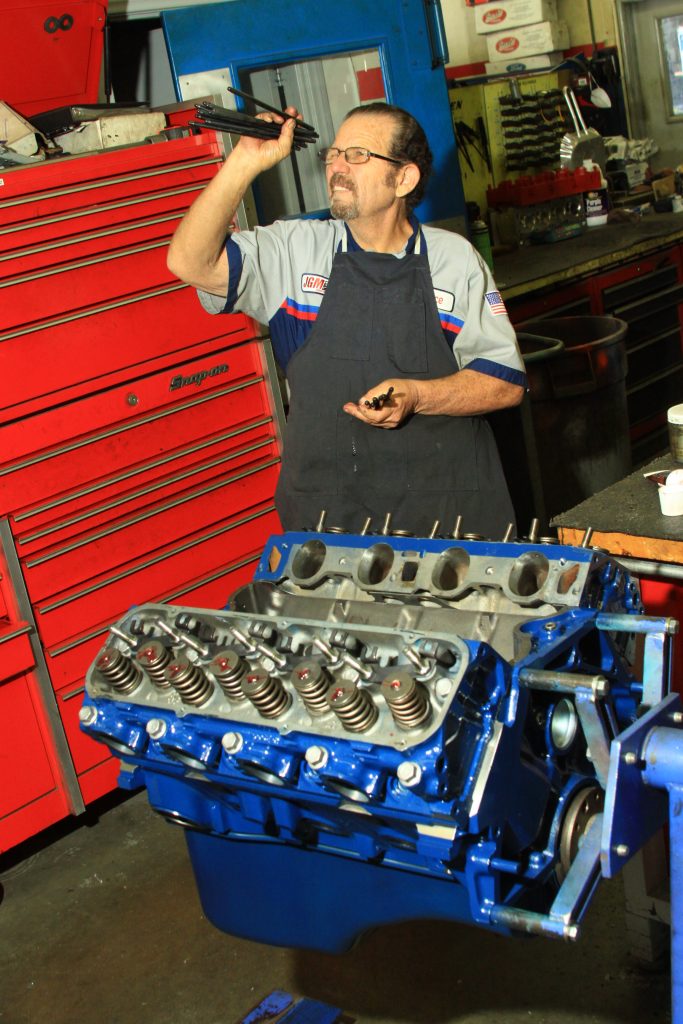
Ford’s legacy of powerful big block V8s dates back to 1958 with the skirted Ford FE Series 332/352ci engines that ultimately grew to 427ci by 1963 and 428ci by 1966. There was also the MEL (Mercury-Edsel-Lincoln) fat block displacing 430 and 462ci produced from 1958-68, a low-revving luxury car monster mash that ultimately became a popular mill for marine racing applications. The MEL made brute low-revving torque for just about any application, which made it perfect for luxury cars.
These engines were right for the time. The FE went on to win Le Mans, putting Ford in the world’s spotlight with new respect from around the globe, settling a battle of egos between Henry Ford II and Enzo Ferrari in the wake of a business deal gone bad. In fact, the FE big block remains the standard for Ford enthusiasts and the aftermarket.
Both the FE and the MEL swiftly became dated mills in the marketplace back in the 1960s. The MEL had these bizarre flat-deck, no chamber cylinder heads similar to Chevrolet’s 348/409ci big blocks where the angled block deck made the top of the cylinders the combustion chamber. Not sure why anyone thought this was a good idea, however, it was proven successful—especially for Chevrolet’s 348/409. At Ford, the abundant torque the MEL made worked perfectly in marine applications and for drag racers. It was also a quiet smooth luxury car powerplant long on twist for heavy Lincolns. It was incredibly quiet.
Enter the Ford 385 Series Engine
By the mid-1960s, Ford product planners and engineers saw the need for new technology in its big block engines. They needed to be lighter with a less complicated manufacturing process. Ford took the 90 degree Fairlane small block blueprint and grew it to big block size. It called its new big block engine the “385 Series” family of big blocks displacing 429 and 460ci also known as the “Lima” engines for their manufacturing plant Ohio. Unlike the small block, Ford conceived a totally new poly-angle valve cylinder head with “right size” port sizing for its new big block.
The result was a Ford big block similar to the big block Chevy. Ford took the valuable assets of the big block Chevy and married them to its own traditional approaches to engine design with the distributor and oil sump in front. Poly-angle valve heads combined with port sizing made the 429/460 Ford a powerhouse. Ford didn’t conceive the 429/460 as a high performance engine. The intent was low-revving luxury power.
Ford soon found the 429 had great potential as a high performance engine. Just two years into production, Ford introduced the 429 Cobra Jet and Super Cobra Jet for compact and intermediate sized rides like Mustang, Torino, Cyclone, and Cougar. It was a natural marriage between a powerful big block and lightweight car models.
Ford 385 Series Engine Performance
The 429/460 makes plenty of horsepower and torque without having to sell off the farm. You can do a cam and manifold swap and make abundant street power. The 429/460 cylinder head flows generously right out of the box and, with good professional head porting, it makes a lot of power.
What the 385 Series big block has going for it is simplicity. There’s very little to understand and, unlike a lot of Ford engine families, very little confusion. There’s one basic block for both the 429 and 460 with a 4.360-inch bore. The difference in displacement between the two was achieved via stroke, with the 429 checking in at 3.590 inches and the 460 at 3.850 inches. If you have a 429 and want displacement, it is easy to get via a 460 crank and you’re good to go. The aftermarket offers plenty of displacement via great stroker kits.
The Ford 429/460 Engine Block
The 429/460’s block is undoubtedly its greatest asset. You can infuse a tremendous amount of power—upwards of 800 horsepower—into this block with little concern. It is suggested you opt for a Milodon four-bolt main conversion kit if you’re going to push the power. You may also opt for a stud girdle for two-bolt main blocks. The 429/460 was never produced with a steel crank. All were fitted with a strong nodular iron crank with I-beam rods. None were ever fitted with forged pistons. The only significant change was an externally-balanced 460 with a slide-on counterweight from 1979-up.
Don’t get these components mixed up or you will wind up with compatibility issues.
Very little needs to be done to the oiling system. It is good to chamfer oil galleys to reduce turbulence. A good high-volume Melling oil pump is adequate for most 429/460 street/strip applications. If you’re going drag racing, you’re going to want a deep-sump pan. Road racers and canyon cutters will need a baffled road race pan.
***
Did You Know? The 370…For Trucks
A sidebar to the 429/460 is the 370ci truck 385 Series big block brought into the lineup to replace the rotund Super Duty truck engines in the F-, C- and L-Series heavy-duty trucks. The 370 had a 4.050 inch bore with the 429’s 3.590 inch stroke. It was discontinued in 1991 and replaced by the 460.
***
Ford 429/460 Cylinder Heads, Intake & More
Factory cylinder head choices are simple. There’s the standard 429/460 head casting for 2V/4V engines, the large-port Cobra Jet and Police Interceptor castings, and the aluminum Boss 429 castings. There’s also the fuel injected iron truck head that came along late in the 1980s through 1996. What you want for a 429/460 build is the 2V/4V head, Cobra Jet, or the Police Interceptor head if you can find the latter. Cobra Jet and Police Interceptor castings tend to be costly because they are so scarce, especially if you add port work to the price tag.
Because the factory high-performance castings tend to be expensive, especially if you intend to do port work, you are often better off with aftermarket aluminum castings, which run about the same cost and you can bolt them right on. Trick Flow offers a wealth of cylinder head options for the Ford big block. Ditto for Edelbrock, AirFlow Research, and Ford Performance.
Factory intake manifolds consist of two basic types—Holley square base and spread bore for Rochester Quadrajet and Holley Spread Bore. The aftermarket brings you a wealth of dual- and single-plane intake manifolds depending upon what you want the engine to do. High rpm operation calls for a single plane manifold. Dual-plane manifolds are best for street and strip. Carburetor sizing depends upon expected rpm range and the priority of torque versus horsepower. Which is more important to you?
Unless you’re performing a concours restoration, ignition points are for the birds. If you’re running a stock Autolite or Motorcraft distributor, you can always employ a drop-in electronic ignition system. Time-proven Pertronix Ignitor kits can be installed in 30 minutes. Just don’t forget to install the ground wire. MSD and Accel ignition systems perform reliably and last virtually forever.
Building a Ford 429
We’re at JGM Performance Engineering in Valencia, California for a look at a rare box stock 429 Super Cobra Jet build with all the right parts. The Cobra Jet had hydraulic lifters. The Super Cobra Jet has an aggressive cam profile and a choppy idle with the sweet melody of 16 solid tappets thrashing out a beat. On the dyno, our SCJ exceeded factory power numbers thanks to a port job and induction system improvements.
Let’s get started.
***
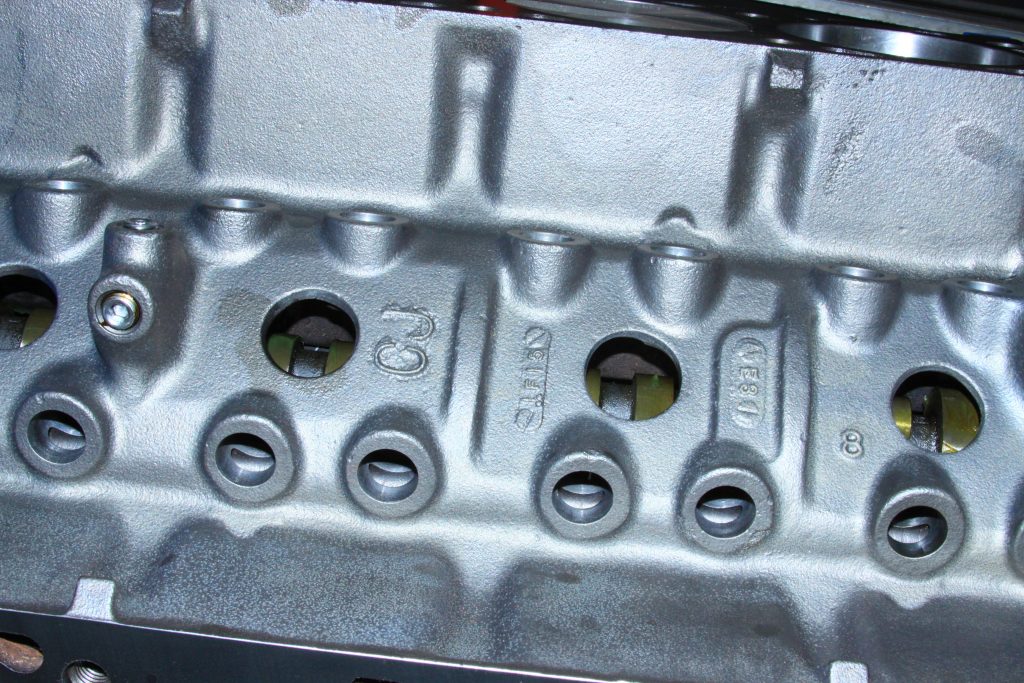
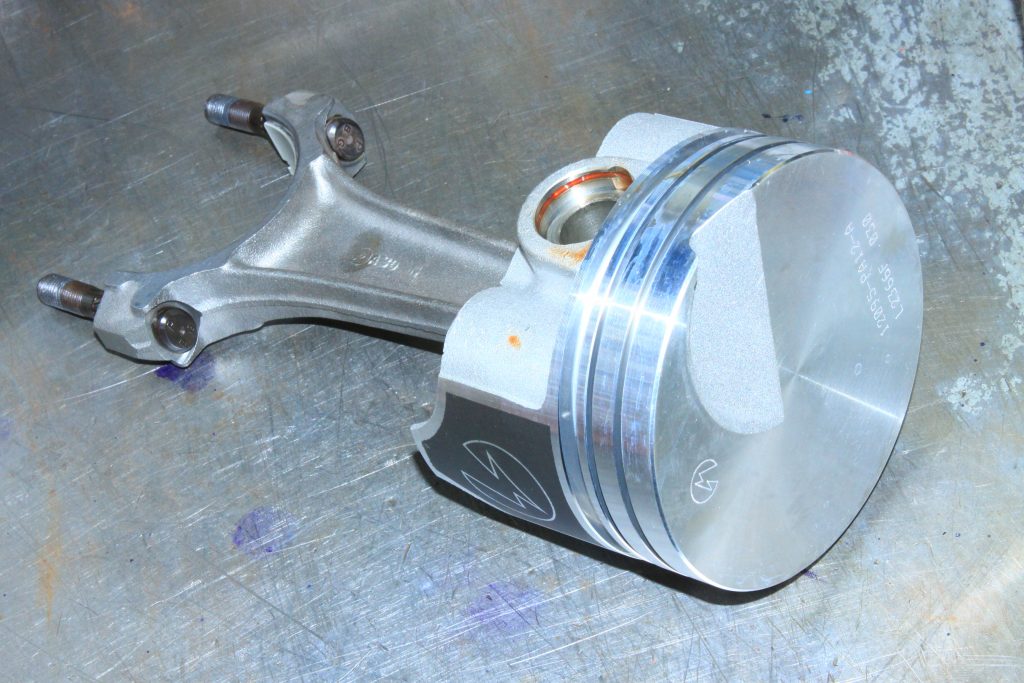
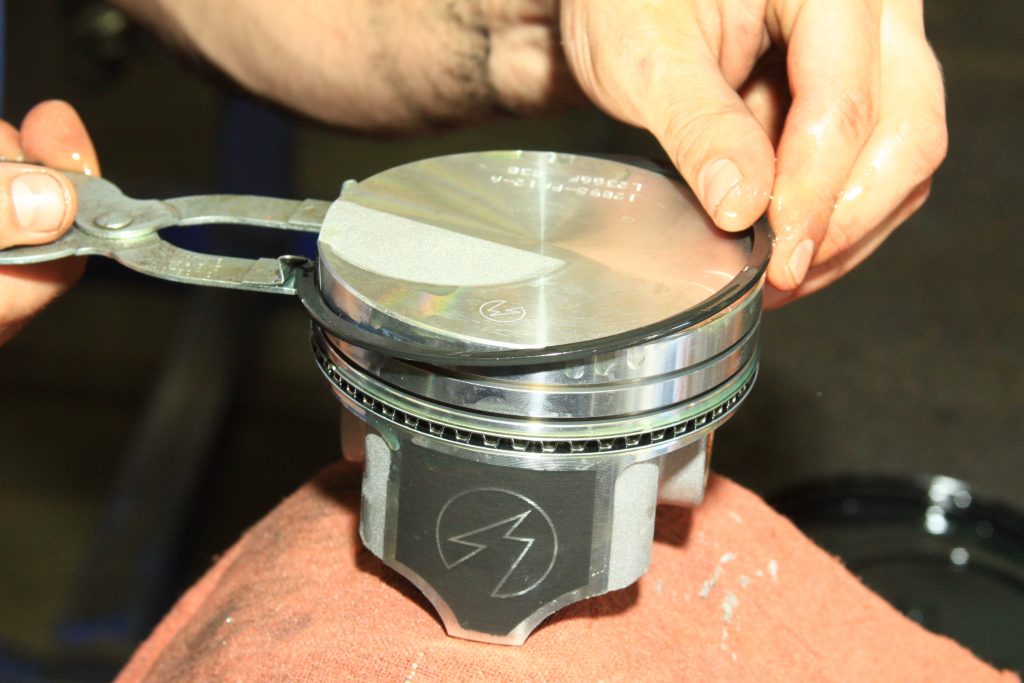
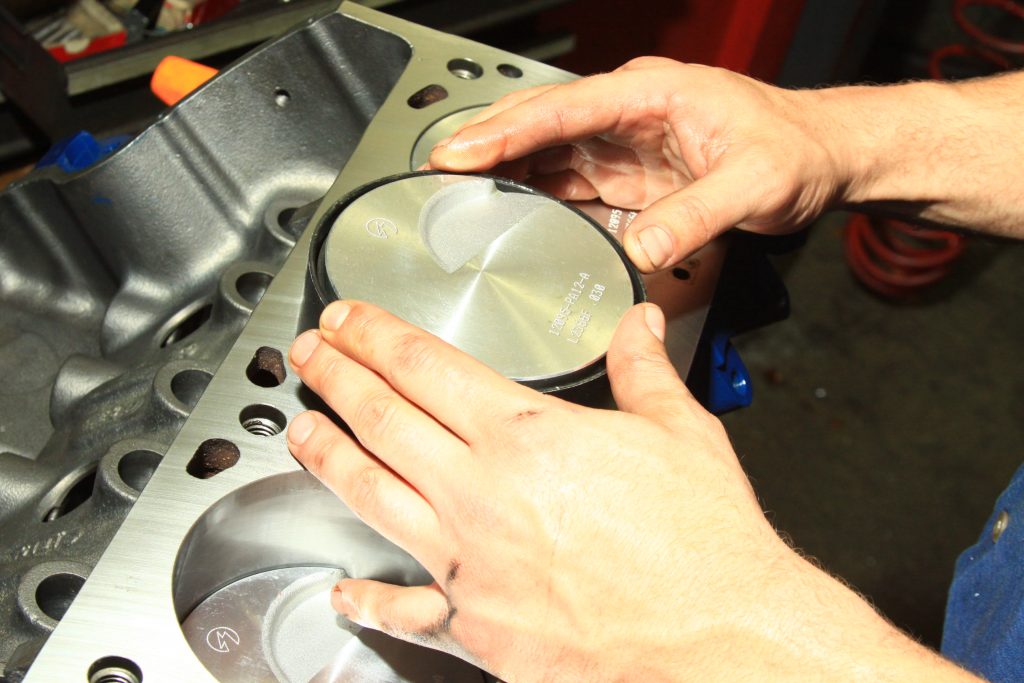
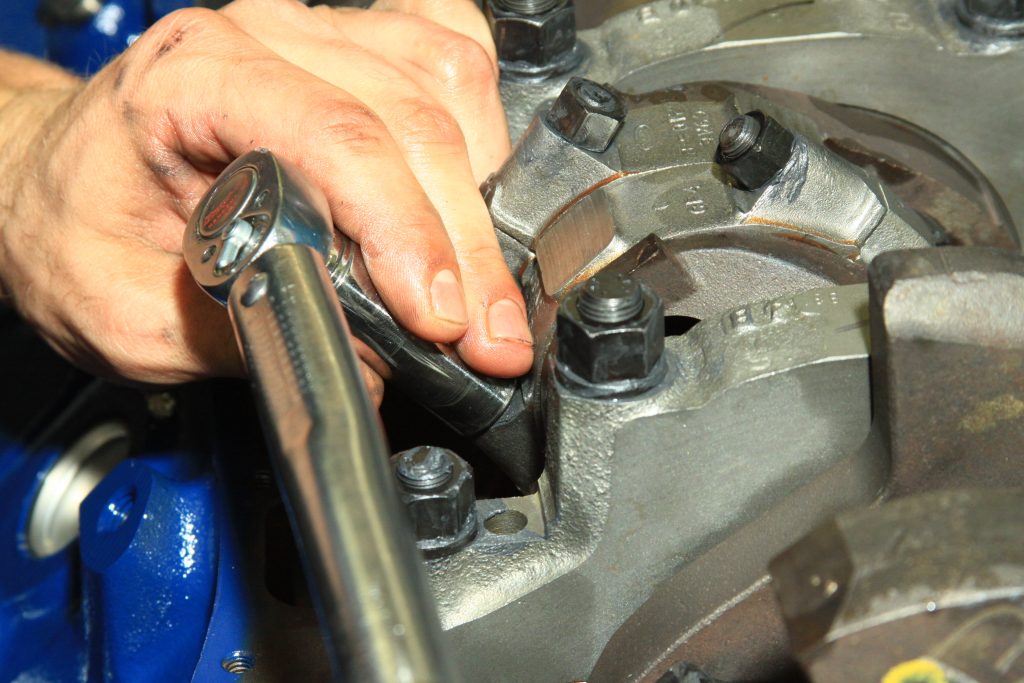
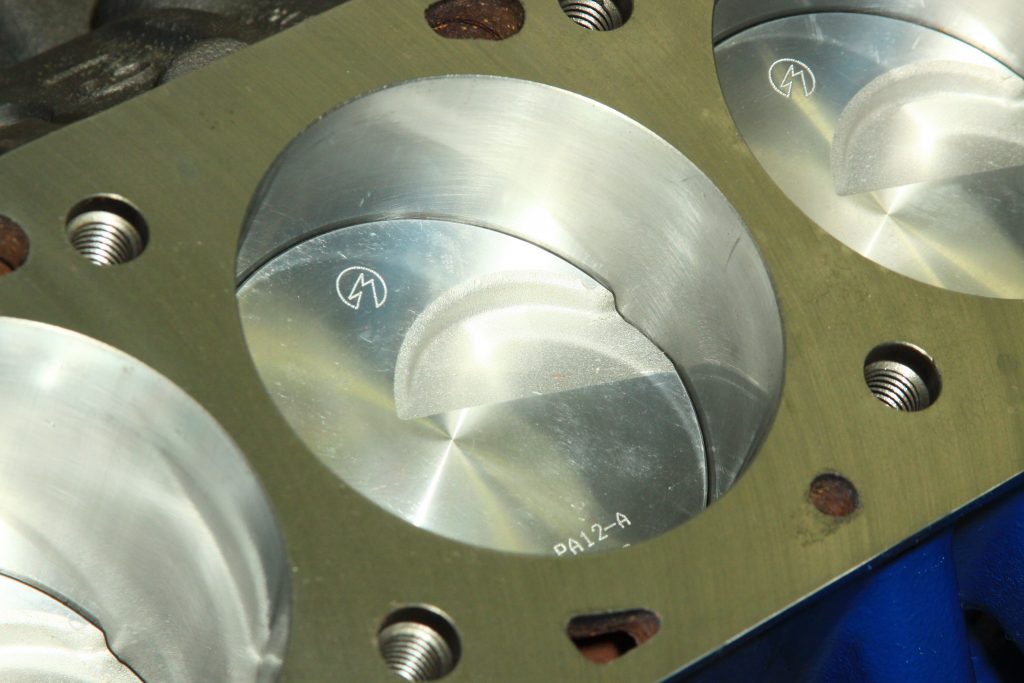
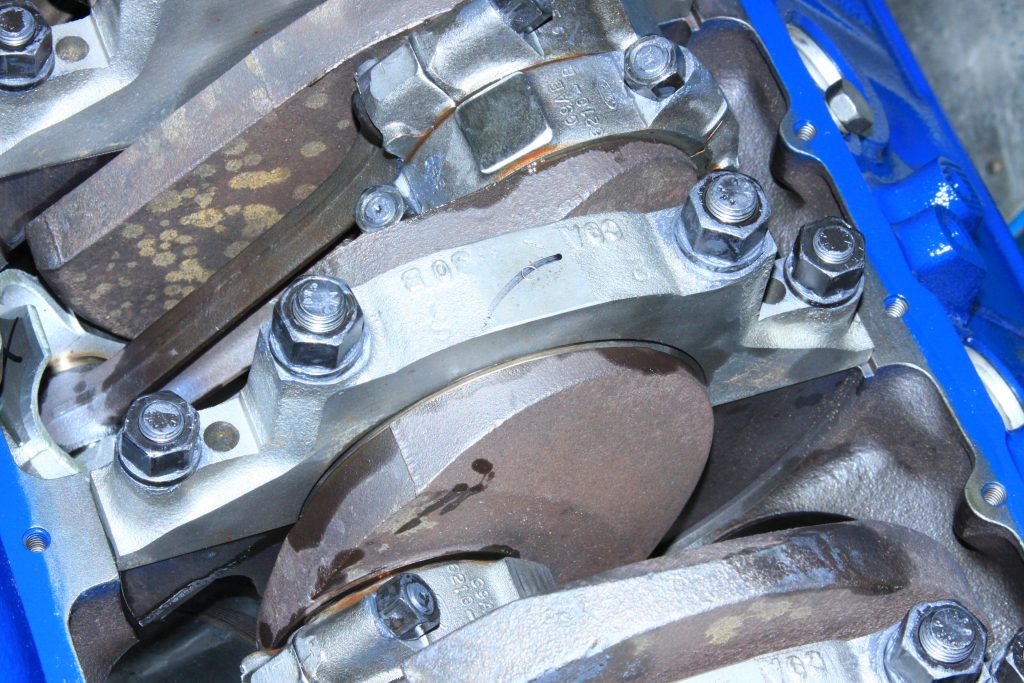
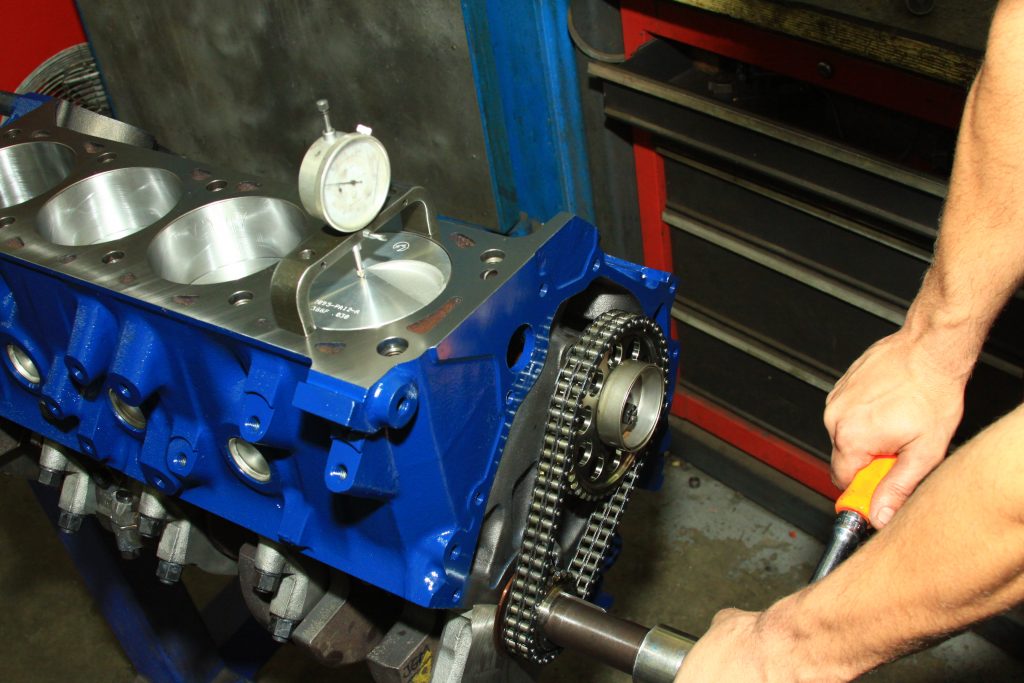
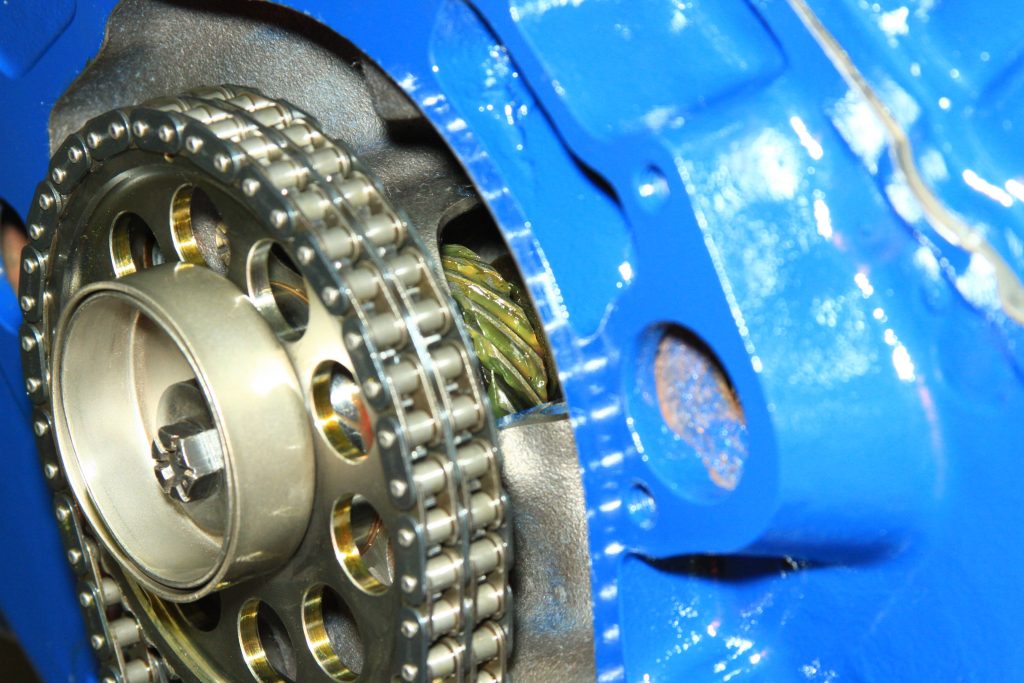
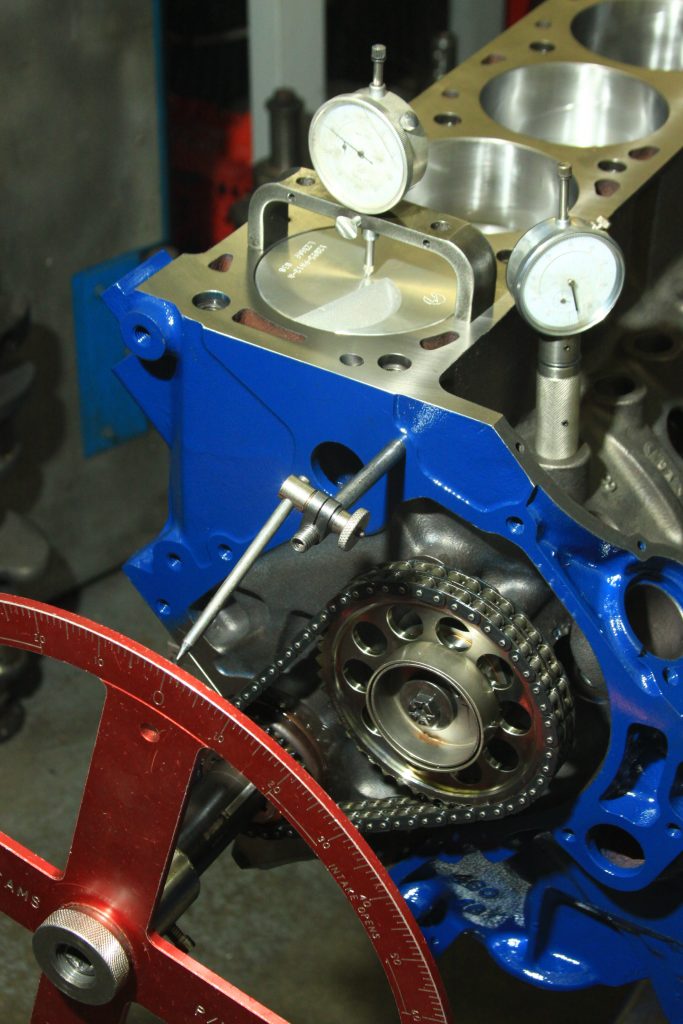
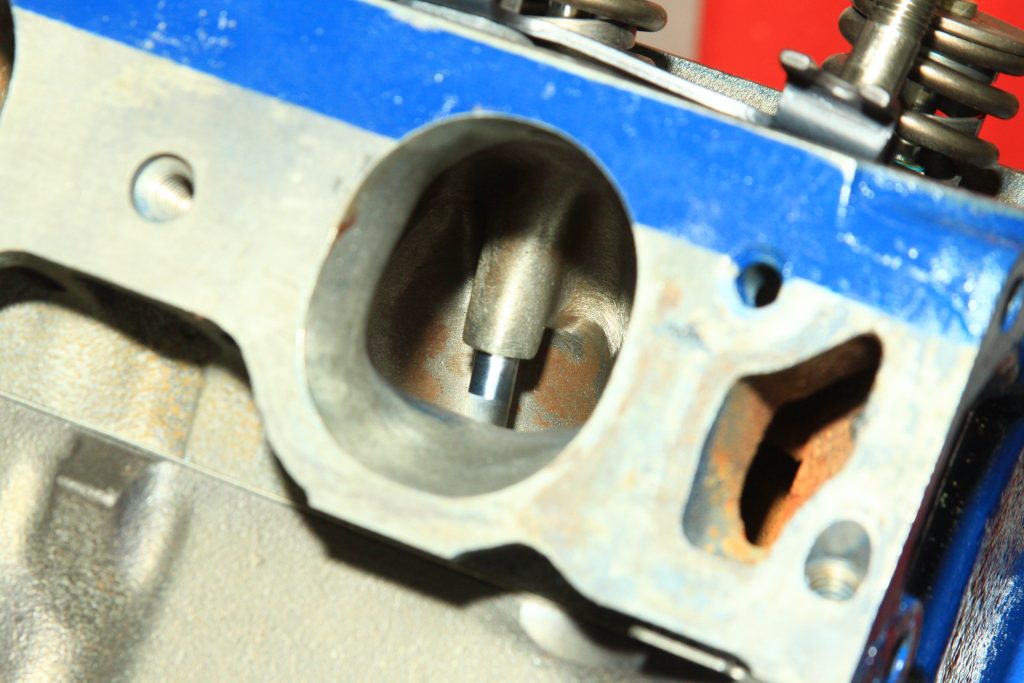
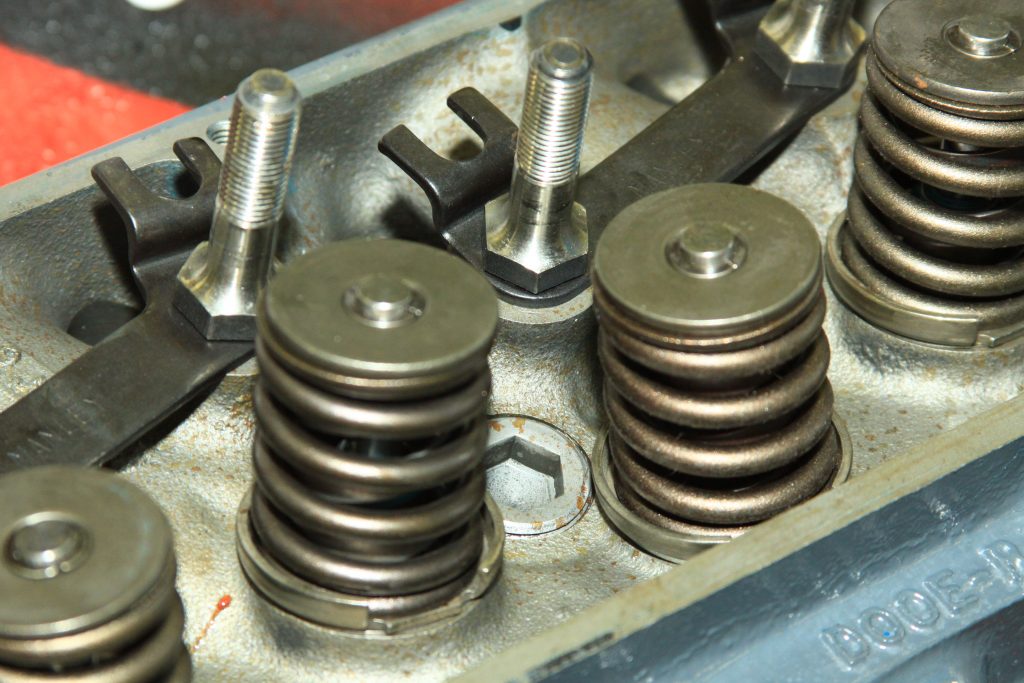
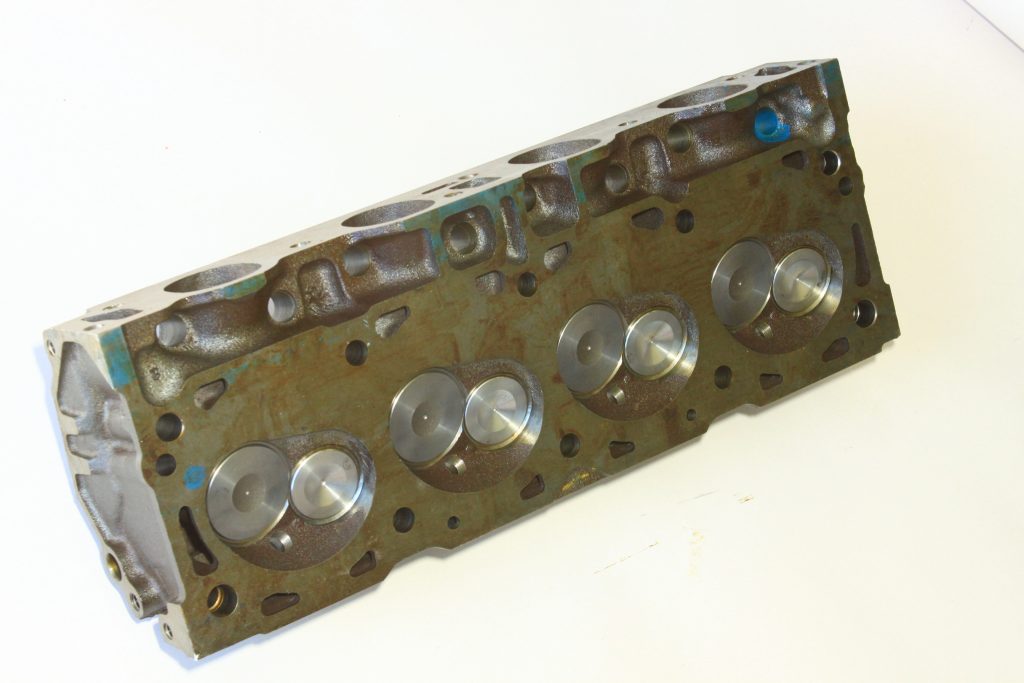
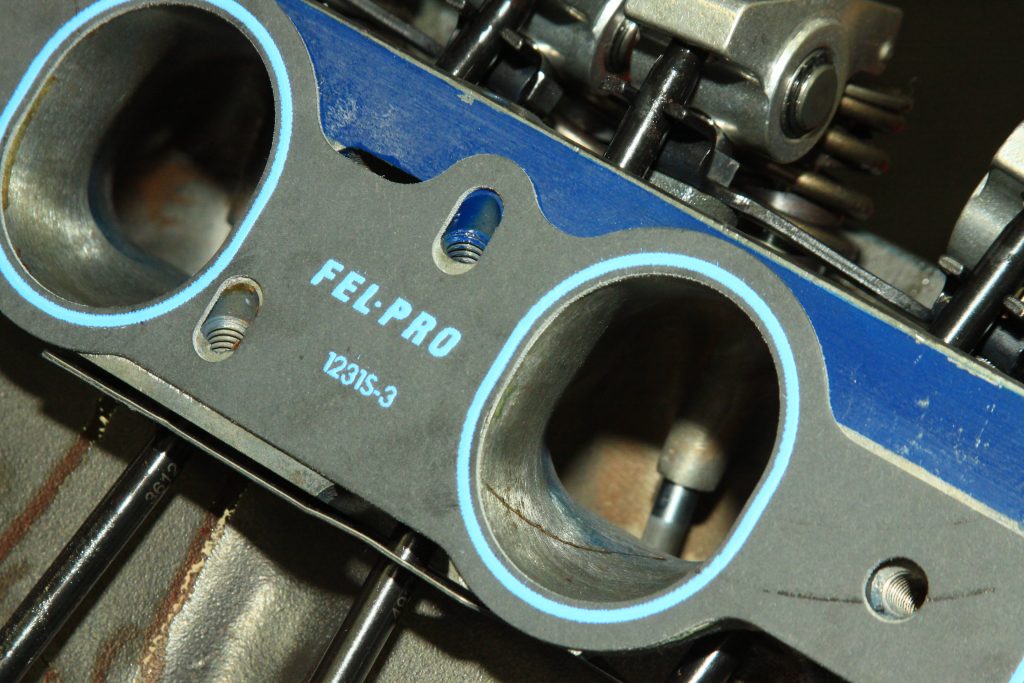
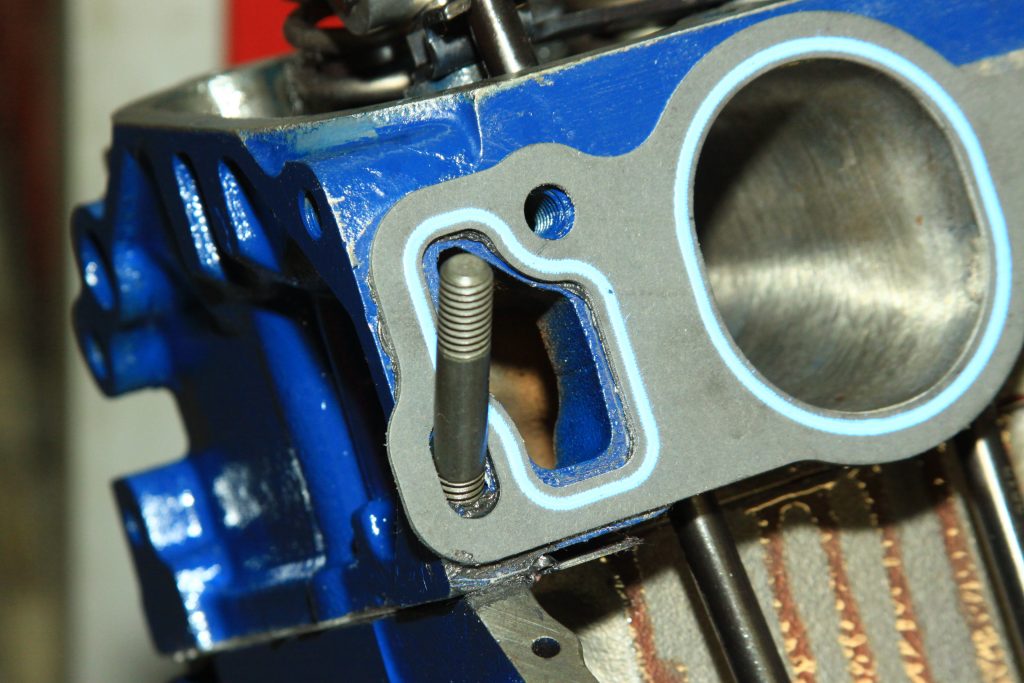
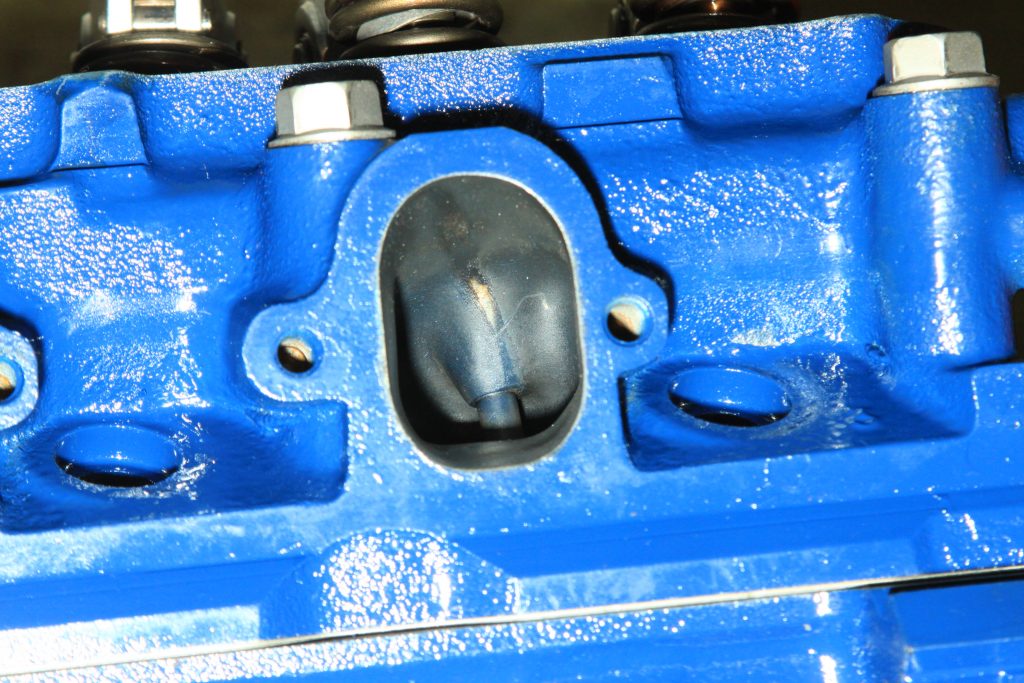
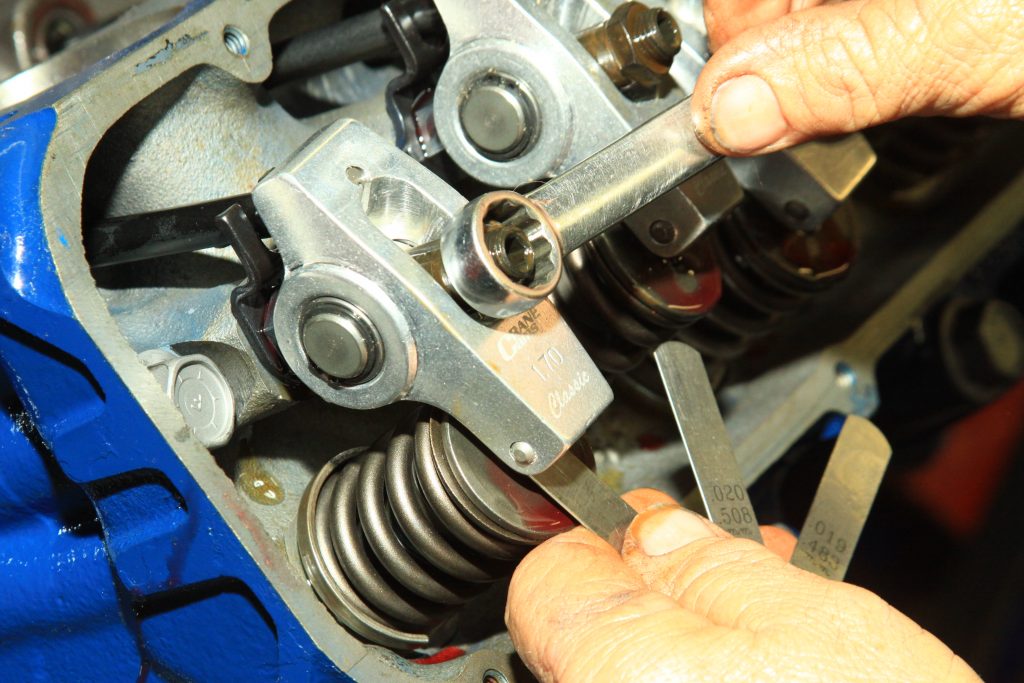
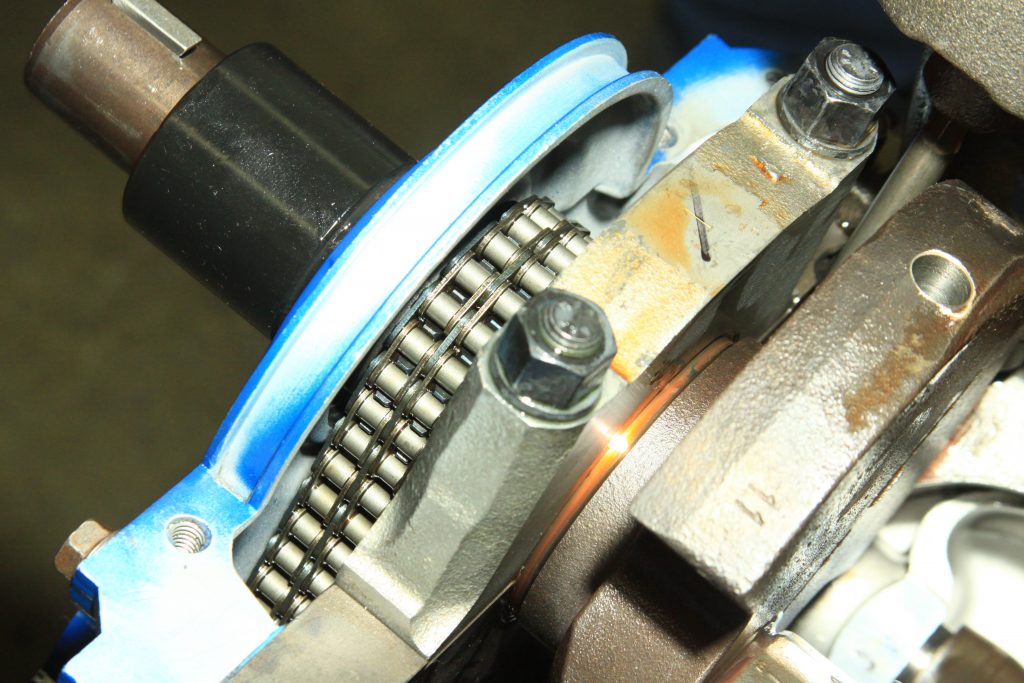

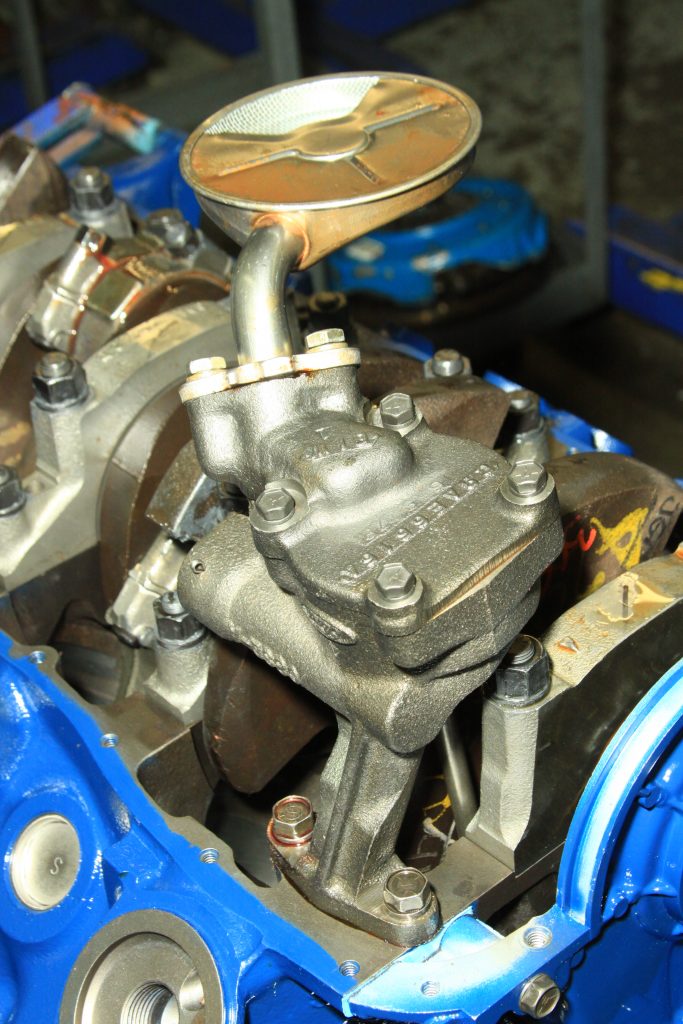
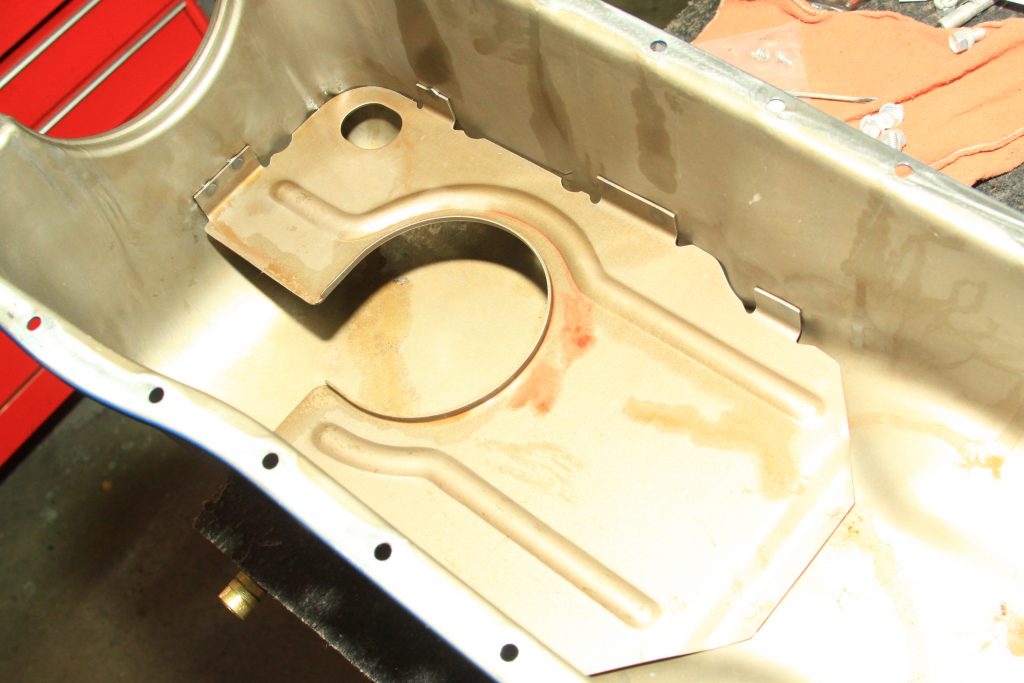

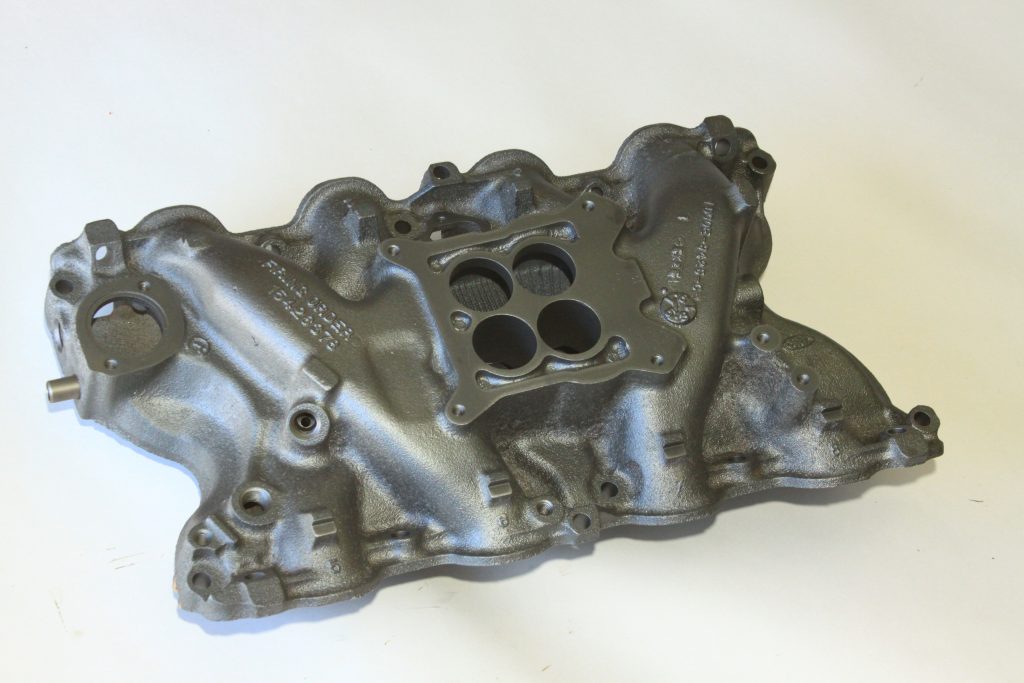
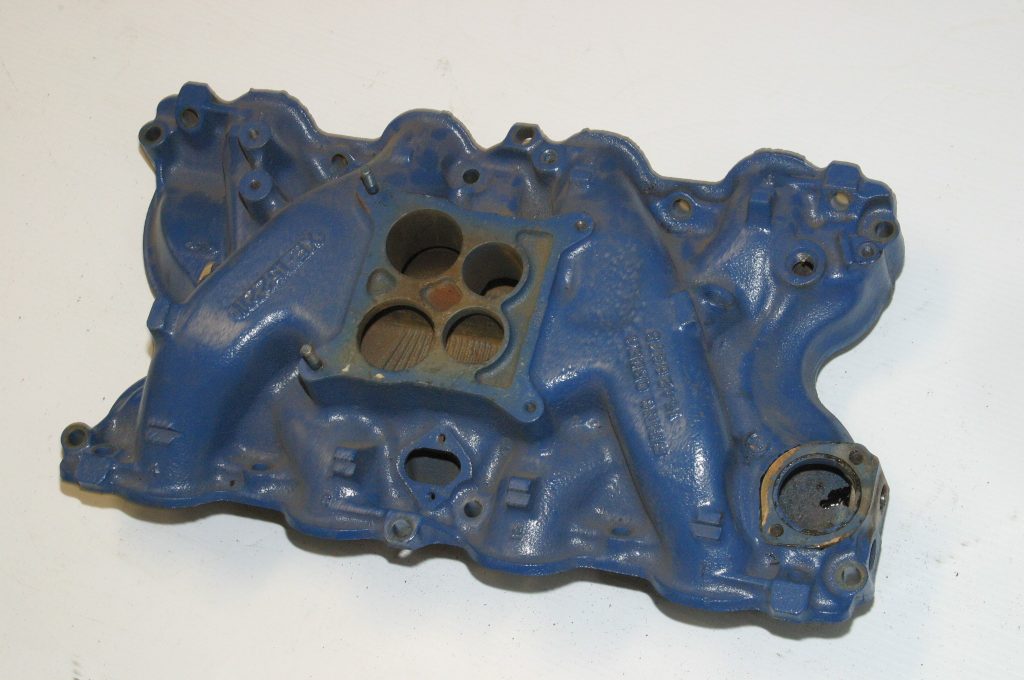
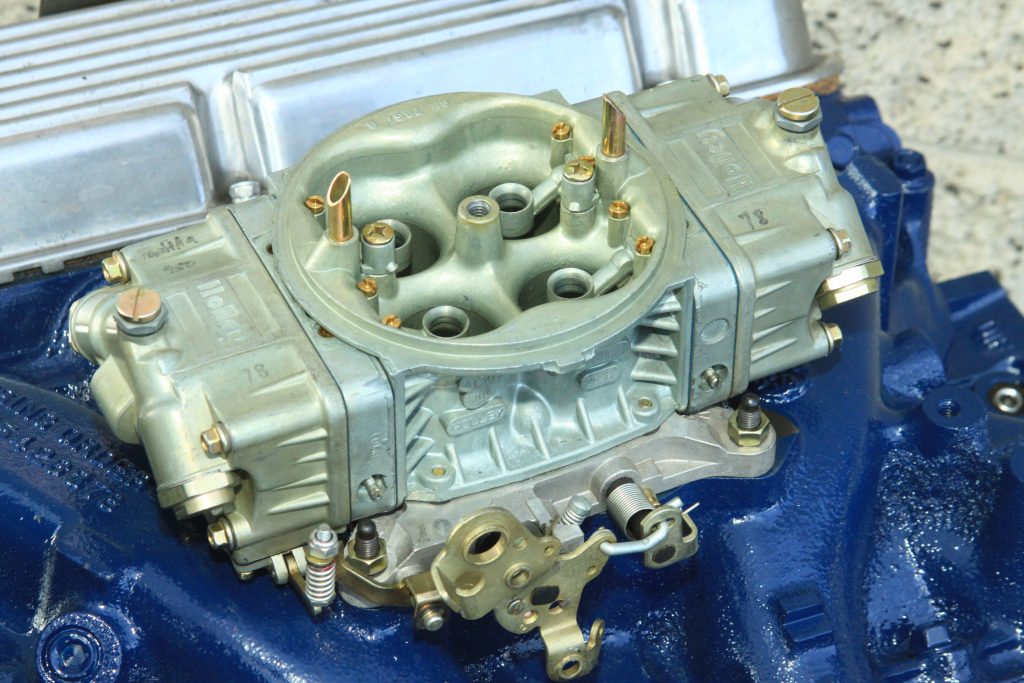
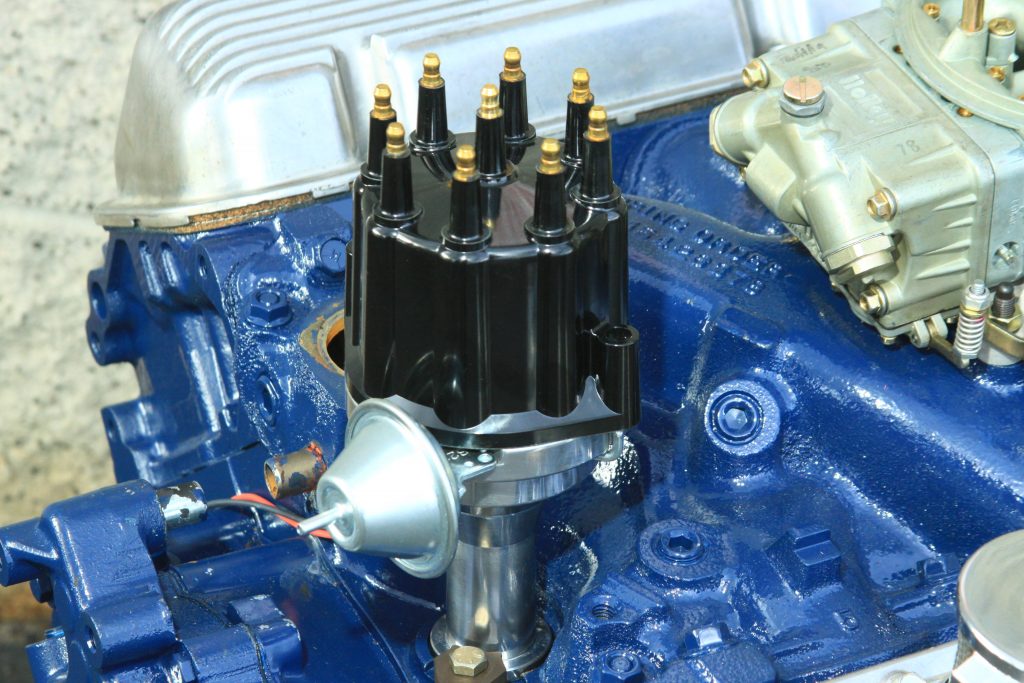
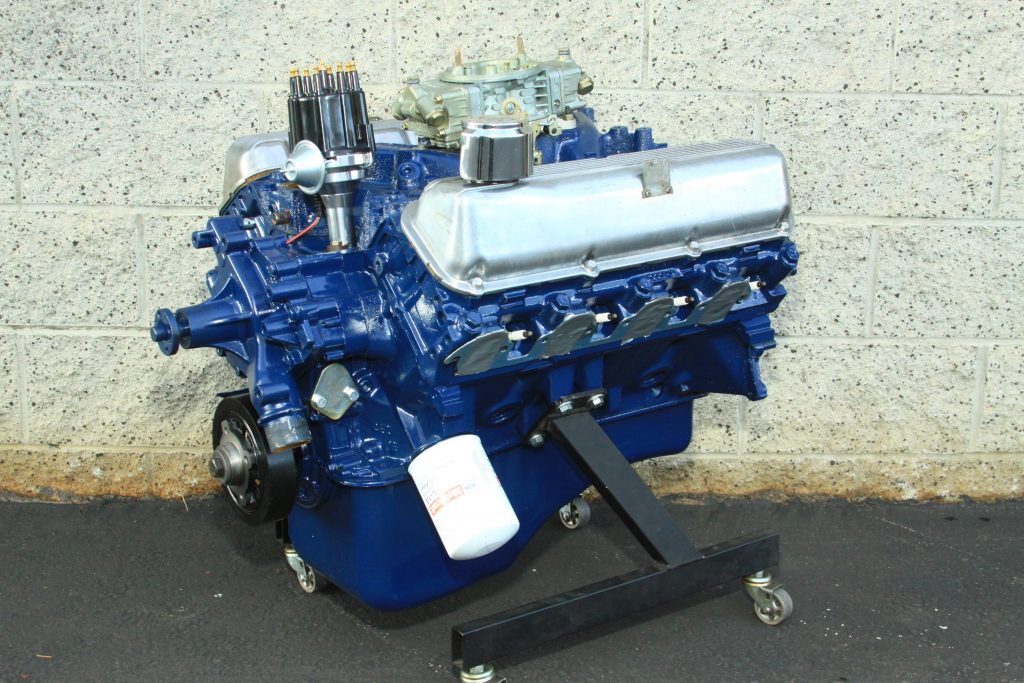
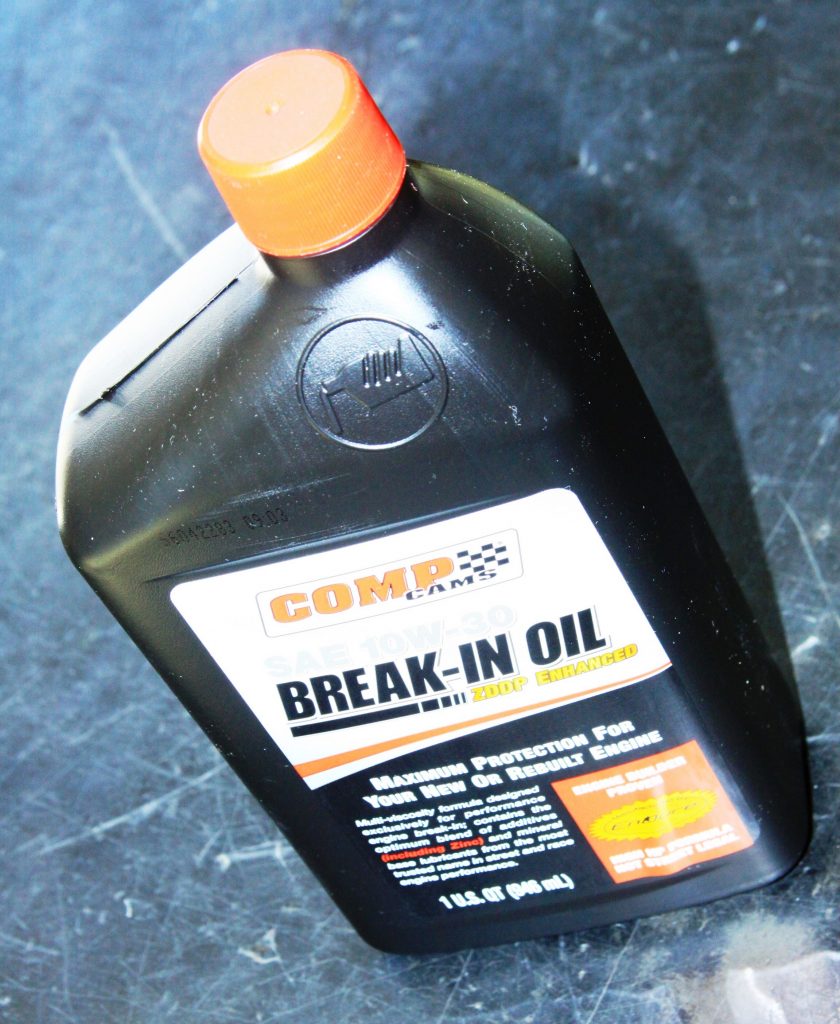
Ford 429/460 Engine Block Identification
| Displacement (cubic inches) | Years | Ford Part/Casting Number (6010) | Bore Size | Notes |
|---|---|---|---|---|
| 429/460 | 1968-70 | C8VE-F | 4.360" | |
| 429/460 | 1969-70 | C9VE-B | 4.360" | |
| 429 Cobra Jet Super Cobra Jet Police Interceptor | 1970-71 | D0OE-B | 4.360" | 4-Bolt Mains |
| 429/460 | 1971+ | D1VE | 4.360" | |
| 429/460 | 1971+ | D1ZE-AZ | 4.360" | |
| 429/460 | 1975+ | D5TE | 4.360" | Truck Block |
| 429/460 | 1975+ | D6TE | 4.360" | Truck Block |
Ford 429/460 Cylinder Head Identification
| Displacement (cubic inches) | Years | Casting Number | Chamber Size | Valve Size | Port Size |
|---|---|---|---|---|---|
| 429/460 | 1968-71 | C8VE-A | 76cc | 2.09" Int. 1.65" Exh. | 2.18" x 1.87" Int. 1.99" x 1.30" Exh. |
| 429/460 | 1968-71 | C8VE-E | 76cc | 2.09" Int. 1.65" Exh. | 2.18" x 1.87" Int. 1.99" x 1.30" Exh. |
| 429/460 | 1969-71 | C9VE-A | 76cc | 2.09" Int. 1.65" Exh. | 2.18" x 1.87" Int. 1.99" x 1.30" Exh. |
| 429/460 | 1970-71 | D0VE-A | 76cc | 2.09" Int. 1.65" Exh. | 2.18" x 1.87" Int. 1.99" x 1.30" Exh. |
| 429/460 | 1970-71 | D0VE-C | 76cc | 2.09" Int. 1.65" Exh. | 2.18" x 1.87" Int. 1.99" x 1.30" Exh. |
| 429/460 Cobra Jet | 1970-71 Only | D0OE-R | 76cc | 2.19" Int. 1.73" Exh. | 2.51" x 2.11" Int. 2.25" x 1.30" Exh. |
| 429/460 | 1972 | D1VE-A | 76cc | 2.09" Int. 1.65" Exh. | 2.18" x 1.87" Int. 1.99" x 1.30" Exh. |
| 429/460 | 1972-74 | D2VE-AA | 91.5cc | 2.09" Int. 1.65" Exh. | 2.18" x 1.87" Int. 1.99" x 1.30" Exh. |
| 429 Police Interceptor | 1972-74 | D2OE-AA | 88cc | 2.19" Int. 1.73" Exh. | 2.20" x 1.93" Int. 2.06" x 1.31" Exh. |
| 429 Police Interceptor | 1972-74 | D2OE-AB | 91.5cc | 2.19" Int. 1.73" Exh. | 2.20" x 1.93" Int. 2.06" x 1.31" Exh. |
| 429/460 | 1973 | D3AE-A2A | 91.5cc | 2.09" Int. 1.65" Exh. | 2.18" x 1.87" Int. 1.99" x 1.30" Exh. |
| 460 Police Interceptor | 1973-74 | D3AE-FA | 91.5cc | 2.19" Int. 1.73" Exh. | 2.20" x 1.93" Int. 2.06" x 1.31" Exh. |
| 429/460 | 1973-74 | D3VE-AA | 91.5cc | 2.09" Int. 1.65" Exh. | 2.18" x 1.87" Int. 1.99" x 1.30" Exh. |
| 460 Police Interceptor | 1974-78 | D4VE | 96.2cc | 2.09" Int. 1.65" Exh. | 2.18" x 1.87" Int. 1.99" x 1.30" Exh. |
| 460 | 1974-78 | D4VE-BA | 96.2cc | 2.09" Int. 1.65" Exh. | 2.18" x 1.87" Int. 1.99" x 1.30" Exh. |
| 460 | 1974-78 | D4VE-B2A | 96.2cc | 2.09" Int. 1.65" Exh. | 2.18" x 1.87" Int. 1.99" x 1.30" Exh. |
| 460 | 1975-78 | D5VE-A | 96.2cc | 2.09" Int. 1.65" Exh. | 2.18" x 1.87" Int. 1.99" x 1.30" Exh. |
| 429/460 | 1979-85 | D9TE-FA | 96.2cc | 2.09" Int. 1.65" Exh. | 2.18" x 1.87" Int. 1.99" x 1.30" Exh. |
| 429/460 | 1979-85 | D9TE-HA | 96.2cc | 2.09" Int. 1.65" Exh. | 2.18" x 1.87" Int. 1.99" x 1.30" Exh. |
| 429/460 | 1985-87 | E5TE-HA | 96-97cc | 2.09" Int. 1.65" Exh. | 2.18" x 1.87" Int. 1.99" x 1.30" Exh. |
| 429/460 | 1985-87 | E5TE-TA | 96-97cc | 2.09" Int. 1.65" Exh. | 2.18" x 1.87" Int. 1.99" x 1.30" Exh. |
| 429/460 | 1986-91 | E6TE-DA | 96-97cc | 2.09" Int. 1.65" Exh. | 2.18" x 1.87" Int. 1.99" x 1.30" Exh. |
| 429/460 | 1986-91 | E6TE-EA | 96-97cc | 2.09" Int. 1.65" Exh. | 2.18" x 1.87" Int. 1.99" x 1.30" Exh. |
| 429/460 | 1986-95 | E7TE-BD | 96-97cc | 2.09" Int. 1.65" Exh. | 2.18" x 1.87" Int. 1.99" x 1.30" Exh. |
| 429/460 | 1988-96 | E8TE-JA | 96-97cc | 2.09" Int. 1.65" Exh. | 2.18" x 1.87" Int. 1.99" x 1.30" Exh. |
| 429/460 | 1988-96 | F3TE-JA | 96-97cc | 2.09" Int. 1.65" Exh. | 2.18" x 1.87" Int. 1.99" x 1.30" Exh. |
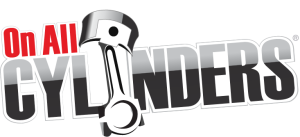
Back in the day 1964 I recall buying a Ford fast back with the fiberglass hood and the alum bumpers. The engine installed at the factory purchased from my local dealer had a 427 CID engine. My question, do you think/know was this a four bolt main crank engine/block?
All 427 FE.s. Were. Cross bolt mains
Side note the article stated that these are supposed to be lightweight engines the 385 series weight in at 720 lbs
Were the FE 390-427. Were 620 lbs and with a aluminum intake. 550 lbs much lighter than the 385 series
All 427 Ford engines are cross bolted. 2 bolts are verticle and 2 bolts are horizontal through the block skirt except the front and rear main caps.
Actually mains were 4 bolt,cross bolts (side of engine block) make 6 bolt crossbolt mains dezign came about from fords nascar & road racing mostly nascar,on the super speedways under sustained high rpm, running itwide open continuously, the lower end would come apart, There’s a lot of flex moving back and forward believe it or not when an engine’s running like that so after several 100 miles Or a few hours of running that way they would come apart and the bottom ends would explode, This was the fix, a cross bolt main design, after this nascar,lemans all made possible by being able to run 6500 rpm sustained, some say more.?
If you’ve ever taken a Chrysler 426 hemi apart you’ll notice Chrysler copied this feature from this Ford block, Even the Modern modular engines 24 and 3 valve they nicknamed them the baby camera they have a 6 bolt cross bokt design as well..
May be old article ill answer anyway ALL True 427FE engines are easily identified, the bottom of the engine block Near where the oil pan would bolt to there are bolts on the outside that bolt through the block into the main caps,the 427FE is a true 6 bolt “crossbolt” Main engine 428’s,390’s,352’s don’t have that, the 410 or 411 which wasn’t affie that didn’t live long they quickly went to 427 that man had it but the metalurgy is also different.
Please excuse the spelling my phone likes to correct me after I write hope you can understand it
every 427 block iv ever seen had the cross bolt mains, making it 4 bolt main
I owned a 1970 429scj (Torino) when I was 18yrs young. Reading about building one lit my fire of intuition. I’d love to try. I had the Holley 750DP carbonator, on the Shelby intake. The article was more than wonderful for me. If you ever needed 1st hand testimony as to what this underrated HP could do, I’d be one of few that could say, it was a beast. Thanks.
The 71” 429scj came with forged pistons
right, but the figure eight design was the weak spot in those motors, tore many 429 s apart, and found cracks in the skirts, a time bomb waiting to explode, the 460 had the straight skirts, no problem with those
In 1974 to 1978 I ran a stock 1970 429SCJ crate engine shoehorned into a 69 Cyclone GT.
Forged Pistons and crank. I beat it up a lot being a daily driver, premium leaded fuel only @ 6 mpg with a stock 3.75 limited slip. I went through about as much cash in tires as gas but she went over 90,000 miles with Mobil 1 synth. without a prob except had to set the valves every 2-3 wks . Feeler and wrenches in the console! FYI never heard of any piston probs with them but then again I would never beat it up cold.
With every engine gas or diesel, I always let them warm up a bit. The denser the material, (forged pistons) warm up is more critical, it’s kind of common sense.
The 460 marine engine was available with an 8to1 cast piston,320hp @ 4600rpm or FORGED 9to1 TRW piston,340hp @ 4600 rpm. The Holley flange cobra jet manifold was utilized for the marine 460 and gave an additional 10 hp @ 4600rpm over the stock manifold ( even with terrible port mismatch of the smaller cylinder head intake ports). The marine engine performed well in the 1971 to 1973 heavy Mutangs buzzing to 5500 rpm with the marine cam. The heads choked the rpm levels.
thank u first on race day
I had a 1970 torino super cobra jet 429 ram air what was special it had bench seat an rubber floor no carpet. I was only 18 when I got it .now every time I think about it which is everyday I cry for selling it it was yellow an black I have a diecast model of it that set right in front of me at home. Love my fords
Anyone ever flowed the 429 factory SCJ Holley intake on a flow bench to see what CFM it flowed? Just wanting to compare it to say the Weiand Stealth 8012, the PERormer RPM and Torker II intake manifolds.
I haven’t but I looked at some of the dyno charts it’s amazing that factory heavy castiron intake seems to be the best low mid range torque setup for truck applications or slightly modded street engines, when swapped out right away it loses low and mid range torque not a little but 30-50 ftlbs below 3500 rpm and picks it all back up on the topside, but thats the sweet spot. I’m going for ford performance or AFR heads, street torque,3/ton, 4×4 truck 400 to 450 hp. 500 torque, hopeful guesstimation build, i cant wait fir the power and the 4 to 6 mpg.LOL
Former Ford engineer! your pretty close but about perfect… I have still have a few of the SCJ motor laying around… If needed
Thanks George 460
Are Your 429scj’s still available?? Would be interested if so but I know your post is older. Please shoot me an email. Thank you. Mike
Hey George Ingram ,I would love to talk to you about your SCJ’s! Ken A. Leave me a message so I can reach you !!
Have (7) TRW L2366 .030 pistons on C9VE-A rods here. Am told #8 exited the block violently. Are these CJ or SCJ pistons? No use for them….. any interest?
The truck 88-96 heads, can anything be done to make some power economically? Looking for more torque than upper ram as it’s a truck engine.
The engine had symmetrical port heads that required an intake manifold that had extreme bends to feed each cylinder equally.
The engines with “paired ports” had more efficient intake manifolds.
The distributor was mounted at the front of the engine which also put the oil pump at the front of the engine. The oil pickup tube extended to the rear of the engine and would pull the oil forward against the gravity forces of an accelerating vehicle. Paired intake ports and rear mounted oil pumps were the way most automotive engineers would build engines in the 60’s.. Ford was always weird.
Regarding the engine as built in this story: What rating of gas is required to run this motor without damage? Thanks, blakewoith@yahoo.com
Hey, I have a 429 1970 K 26 and is it in the valley is CJ but it’s only two bolted main is that a good block
In 1970, K26 (k = November 26) Ford had a habit of mixing and matching engine blocks on the machining line. This was due to “on loading and off loading” skids of blocks. The lines were mixed with different castings that were not all finished the same style occasionally. Ford was not about to “clean out the line” to change from the CJs to the 2 bolt non-CJ blocks, so some of the CJ castings ended up machined as 2 bolt blocks. Just the same, some “A” thick bulkhead CJ blocks were machined the same way. Since it cost basically the same to make a standard, CJ or “A” block, Ford wasn’t too concerned about a few CJ blocks going out as 2 bolt main standard 429s. For example, the machining line would get an order to run 500 to 1000 CJ or SCJ blocks and in the process of the approximately 25 progressive “operations” from the beginning “broaching” to the finish “honing to size” of the cylinder bores to match the piston order, blocks went on and off the line depending on back ups or delays. The run would be made while some of the CJ blocks were partially machined on skids.
Thats how even a 2V 1970 429 Mercury Marquis engine could have come with a CJ block. Ford would not let the reverse to happen or they might have been sued but the Mercury owner is not going to complain about having a high-nickle, thicker, 4 bolt main ( three center caps) engine block. The same scenario was possible with the Clevelands, 4 bolt block in a 2V production 351C. Seen that one too!! The blocks are all relatively cheap for Ford to produce by the time they get to end of the machining line.